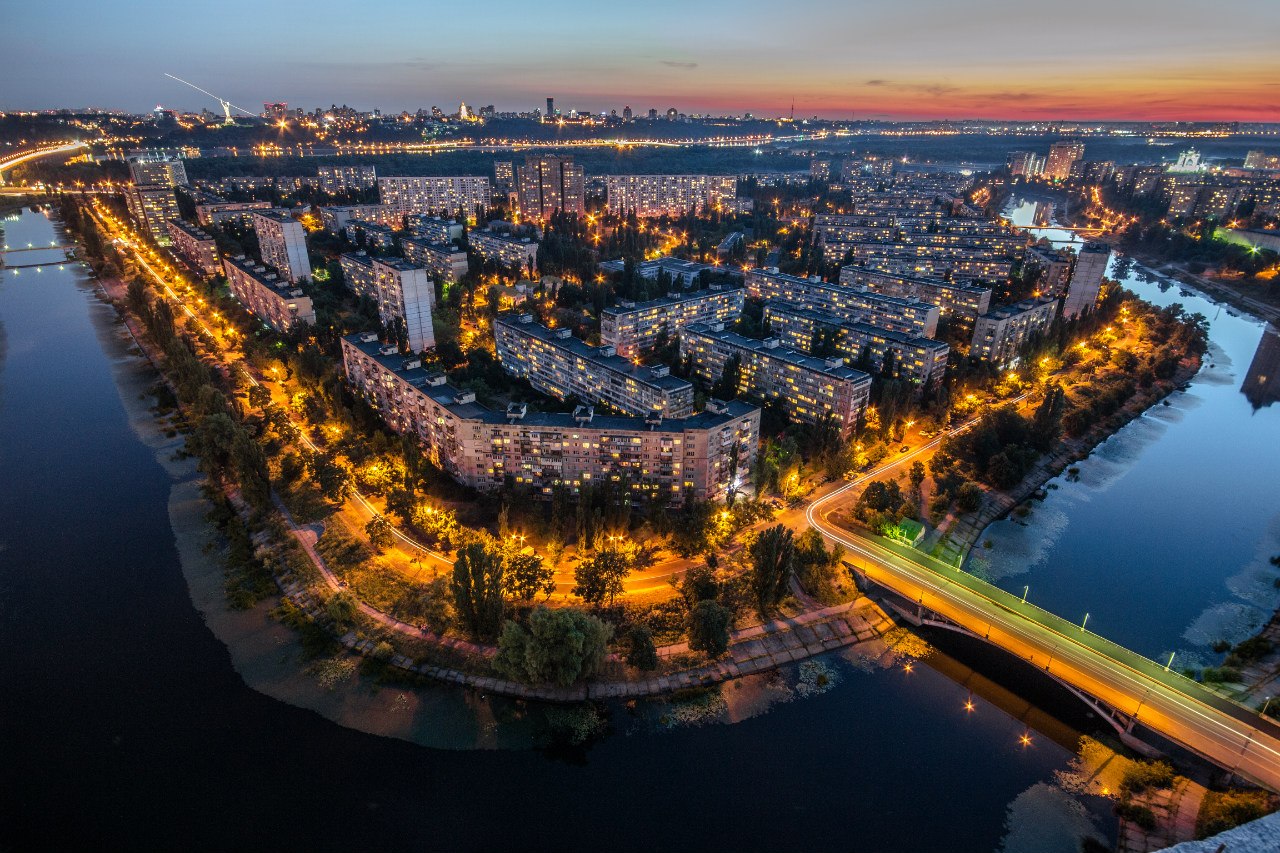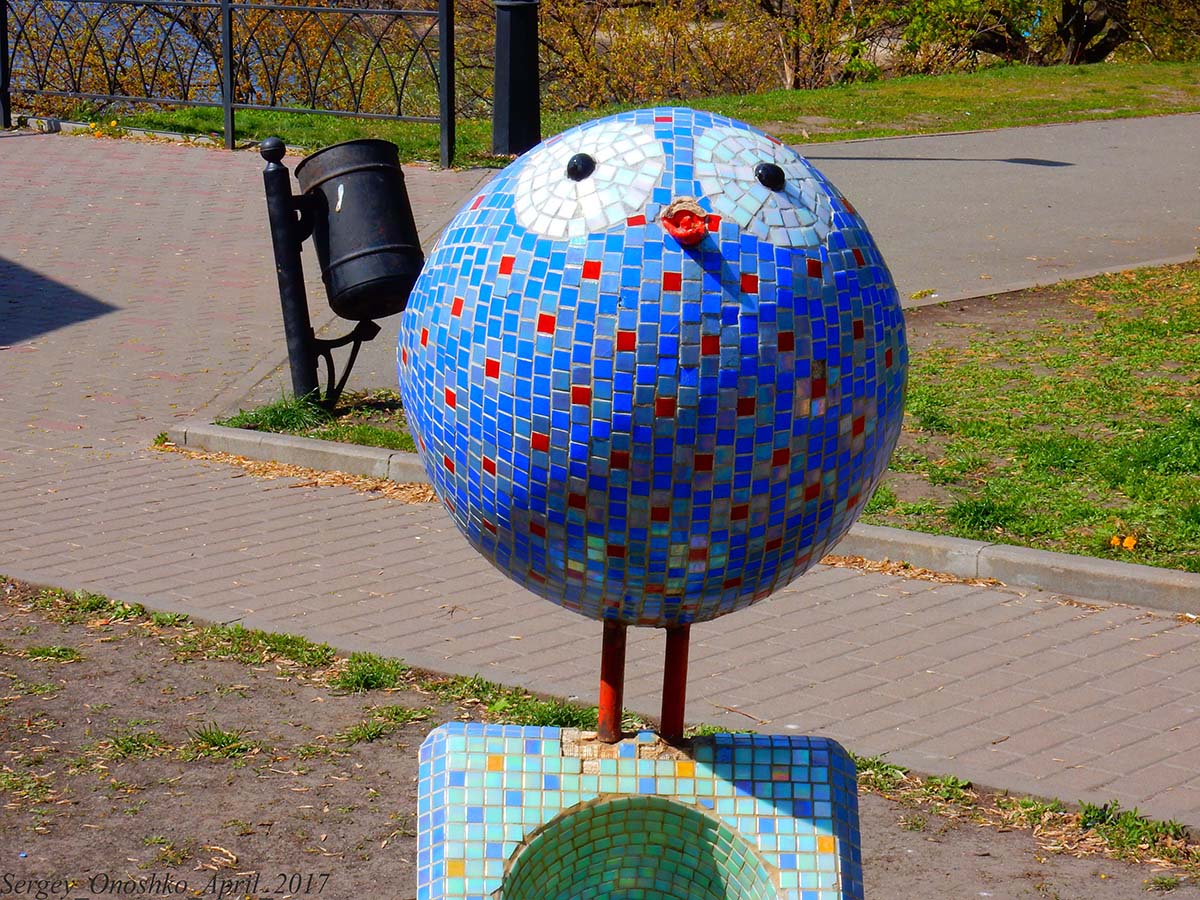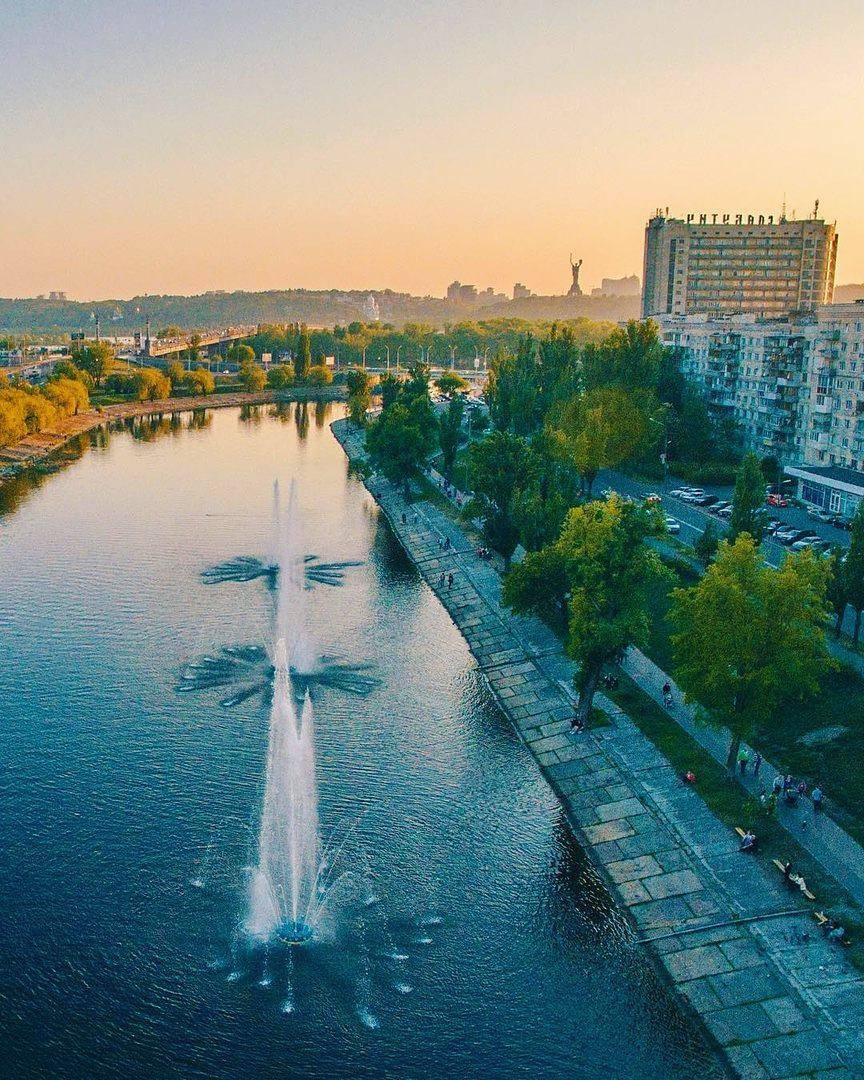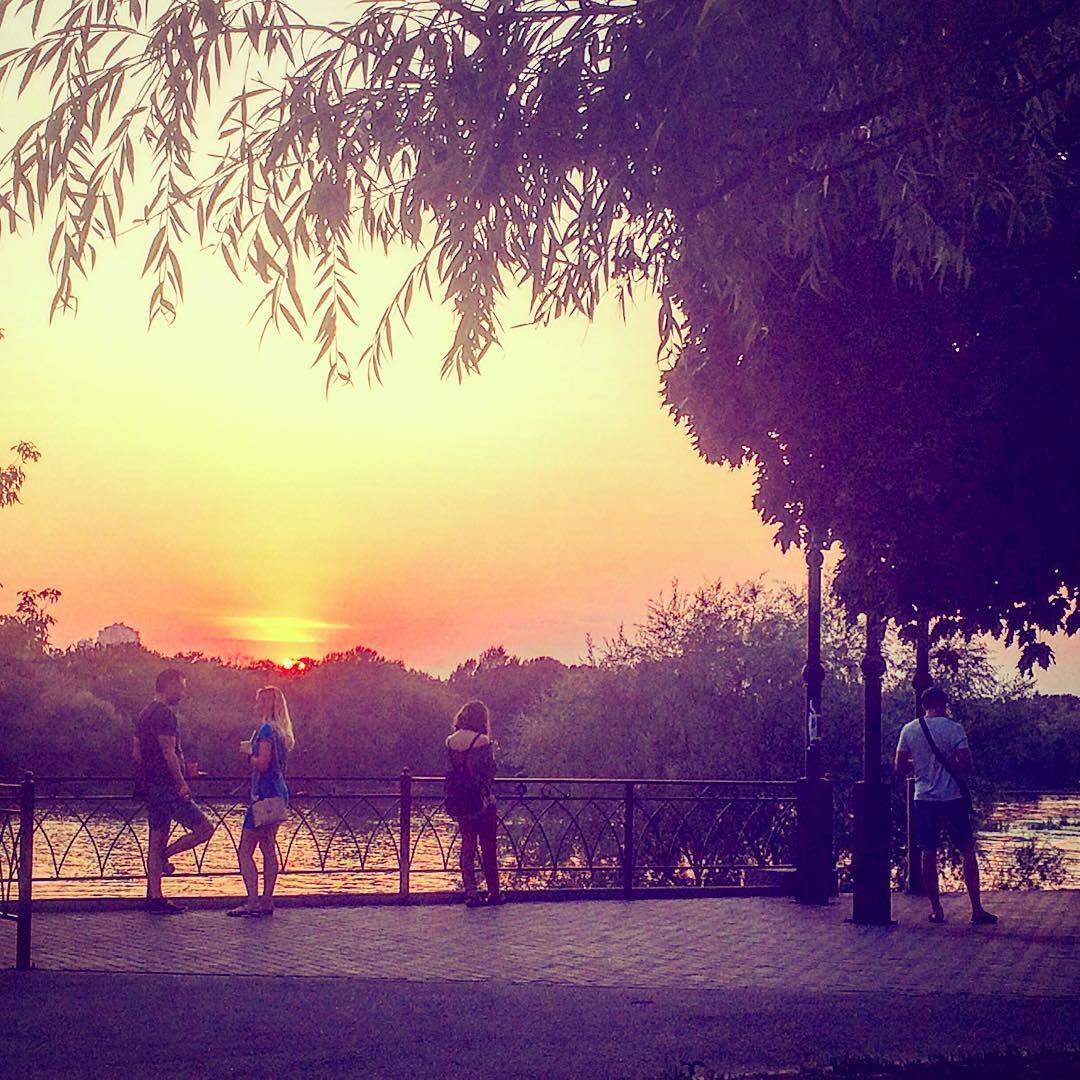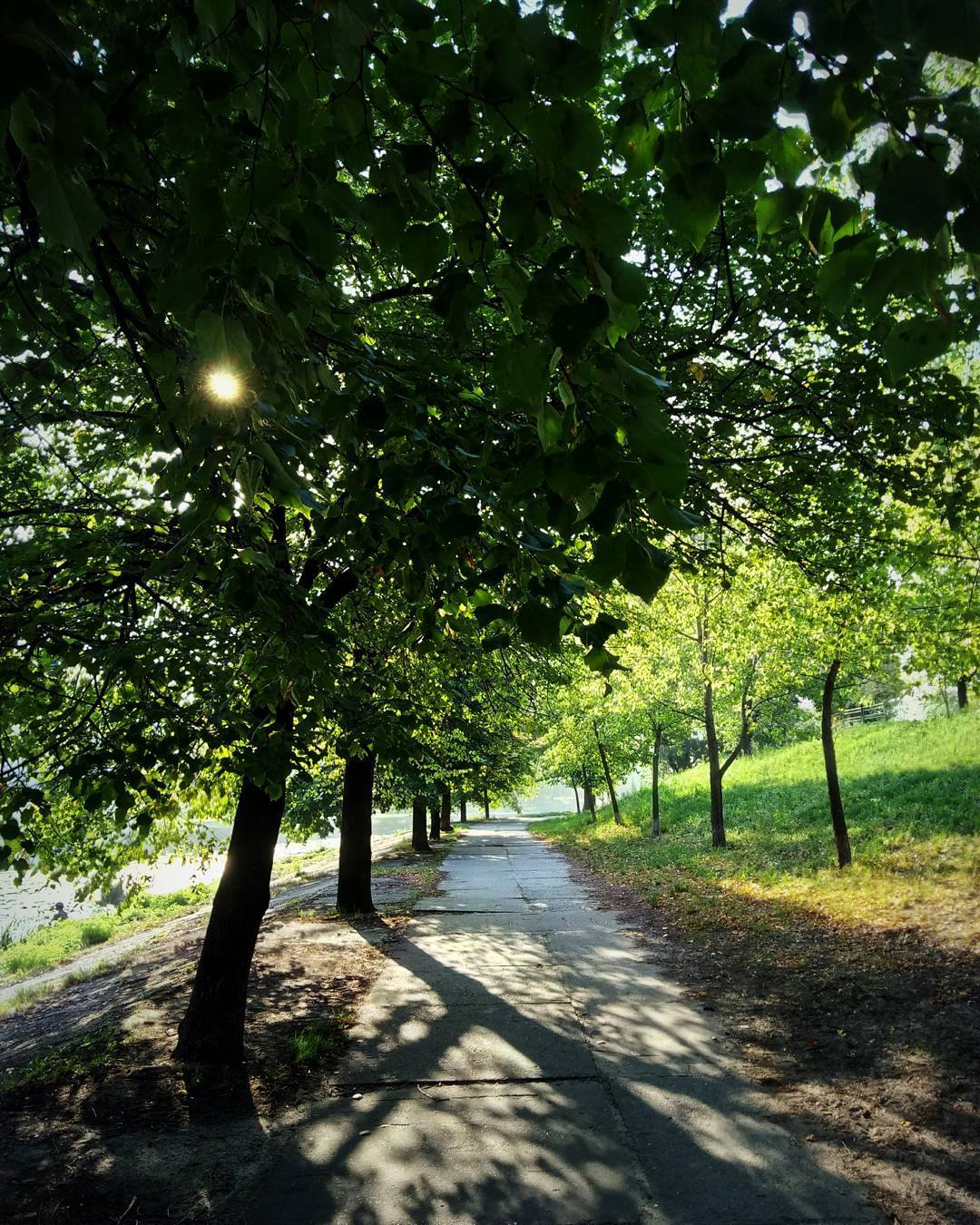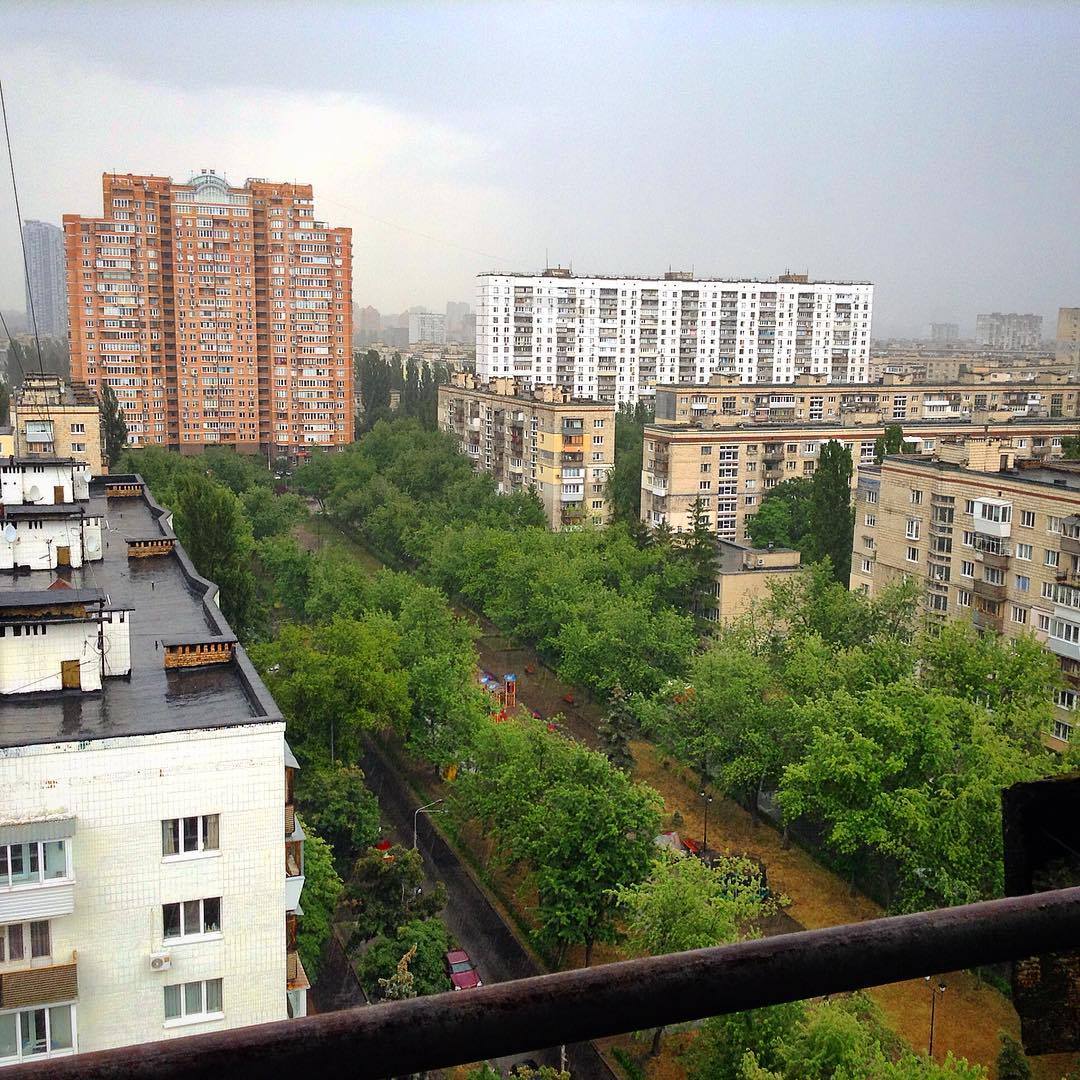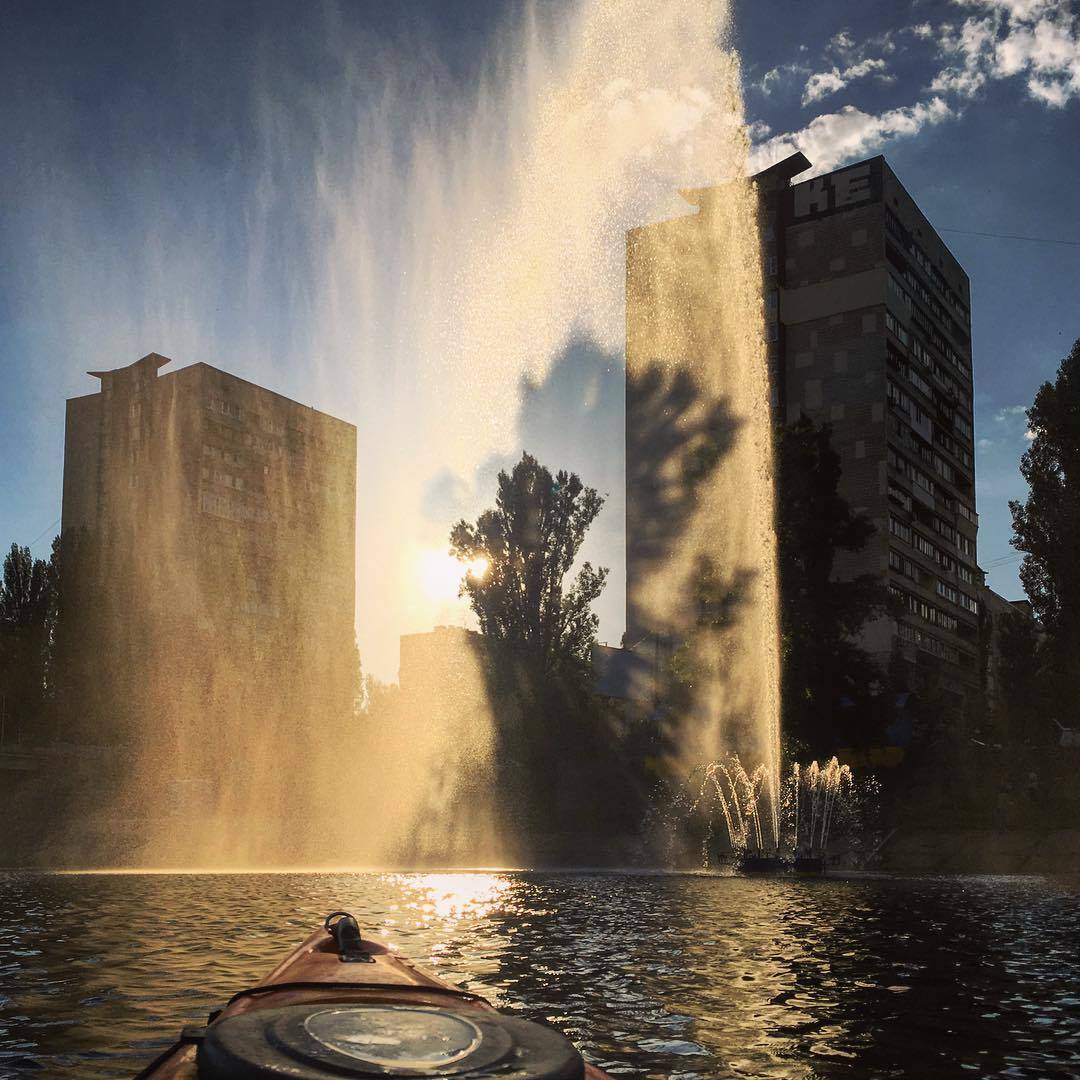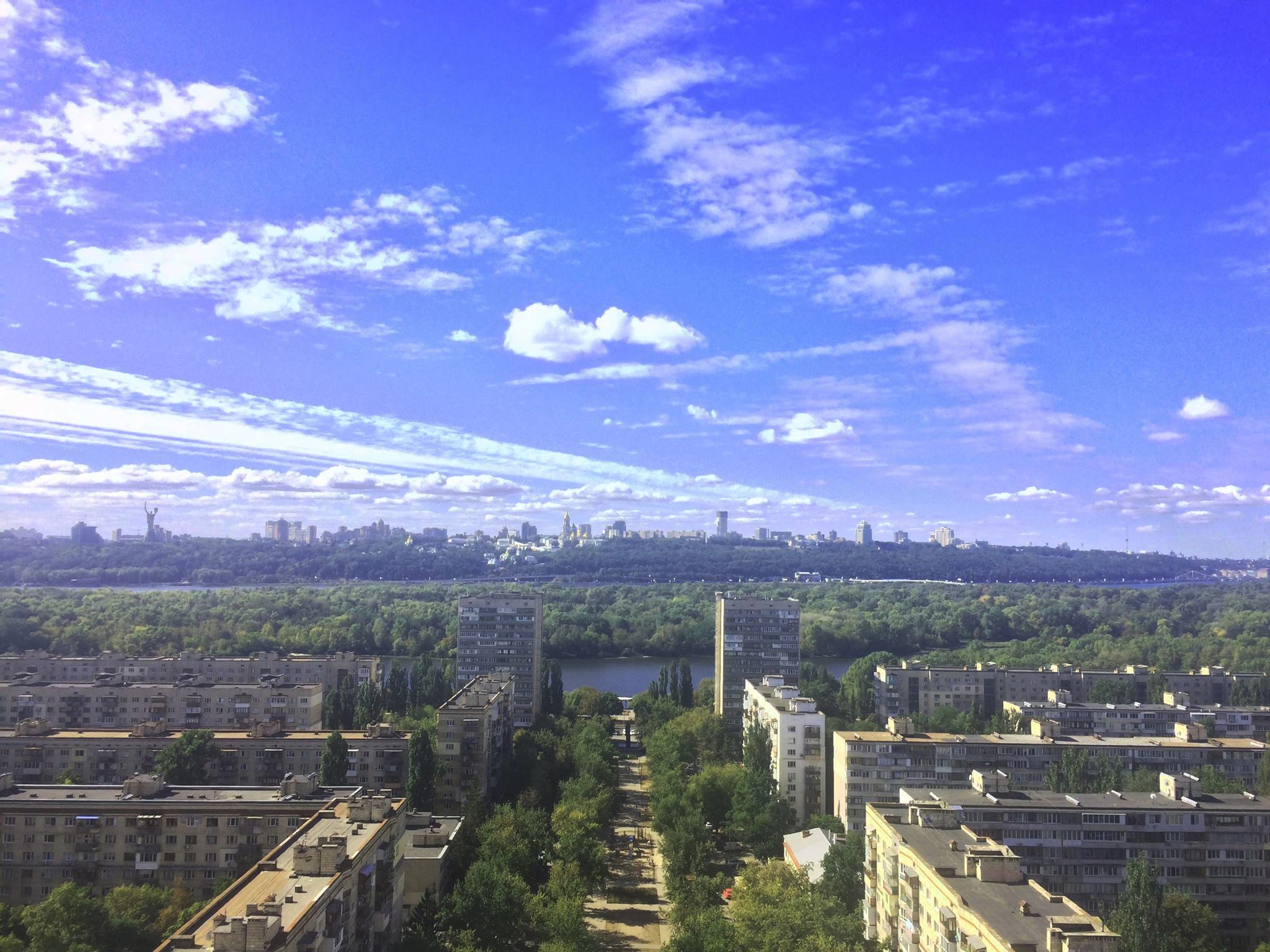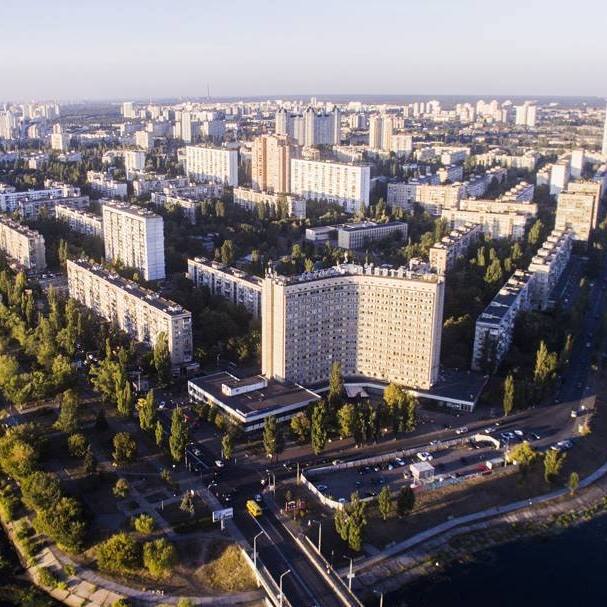Around the end of the 1950s, Soviet engineers began preparatory work for the construction of the Rusanovsky residential area, which would have accommodated nine (series 1-KG-480-11u and 1-KG-480-12u), sixteen (BPS series) and seventeen-story (BPS series) houses made of brick, expanded clay concrete, vibro-rolled panels. The number of people living in Rusanovka was planned at 45,000 people. The total area of the future island was more than 130 hectares. The architects of the array were G. Kulchitsky (Hotel “Slavutich”, the first microdistrict of the Obolon residential area), V. Ladny (Hotel “Slavutich” in co-authorship, River Station in co-authorship), N. Pestryakov; engineers A. Stekel and V. Koval; designer L. Braker.
The main problem with the construction of residential buildings near the Dnieper on the Left Bank was that the water level in the river was not regulated at that time (there was no Kyiv hydroelectric power station yet) and in the spring the whole area was under flood water. Engineers proposed to use the method of hydraulic reclamation to flood-free marks (5 meters). Special equipment (dredgers) lifted sand from the bottom of the Dnieper and used it for alluvium of the territory of the future housing estate.
1961 can officially be considered the year the construction of Rusanovka began. As everyone already knows, Rusanovka became famous primarily for its visual calling card – the Rusanovsky bypass channel, thanks to which it began to be called the Venice of Kyiv. In 1962, Rusanovka had already become an island – only a small earth bridge separated the canal from the strait, and in 1963 the first automobile and pedestrian bridge was opened from Patona Bridge and new buildings began to be populated.
That’s interesting!
1. More than 5,000,000 cubic meters of sand were used for the alluvium of Rusanovka.
2. For the first time in Kyiv, a sewerage collector was laid not underground, but on the surface – after which it was washed away with earth.
3. The total length of the Rusanovsky Canal is 2700 meters, the width is 40 meters, and the depth is from 3 to 7 meters.
4. Rusanovka consists of 3 micro-districts, which at the stage of hydraulic reclamation they wanted to divide with small water canals, but then these canals were filled up – the architects saw that there was nowhere to build especially because of them.
5. Rusanovka became the first housing estate in Kyiv with high-rise buildings – there were no houses with less than 9 storeys.
6. In 1968, here, at the beginning of Shamo (Davydov) Boulevard, the first 16-storey brick building in Kyiv appeared.
7. For the first time in the Union, all communications were laid not under the roads, but in special collectors under the lawns. Thus, traffic during repairs or emergency work is not blocked (which is basically impossible on an island where there are no detours).
8. In the 1970s, experimental 17-story houses began to appear on Rusanovka (popularly – “houses on legs”). To keep these colossus on 900 piles (total weight of more than 50,000 tons) driven to a depth of 10 meters.
9. On Rusanovka there is an abandoned pumping station built in 1968 (Rusanovskaya embankment), which was used to irrigate lawns and flower beds of the island through an extensive network of pipes, and was also designed to pump water during possible floods.
10. There are 3 modern art objects on Rusanovka: “Ladder“, “A bird that flew to the middle of the Dnieper” and Grandma with kravchuchka“.
11. Every summer, the station “Scarlet Sails” operated on the Rusanovsky Canal for the rental of catamarans and boats.
12. During the construction of the Krakow cinema, for the first time in Kyiv, 24-meter trusses were used to cover the hall and special slabs with slag to improve acoustics. “Krakow” was a popular place of leisure for the Rusanovites of those years.
13. Another hallmark of Rusanovka is the Slavutich Hotel, which was built in 1972 and designed for 800 people (500 rooms). On the ground floor there was a restaurant and a cinema. As of 2018, the hotel has been bought by a private individual and is undergoing a complete renovation.
14. Many famous people lived and live in Rusanovka, such as: Alla Mazur, Valery Chiglyaev, Mila Jovovich, Alexei Gorbunov, Viktor Andrienko, Sergei Kazanin, Alexander Pikalov, Nikolai Lutsenko and many others.
15. In 1964, the largest grocery store in Kyiv “Slavutich” was opened on Rusanovskaya embankment.
16. In 1979, the only salon for newborns in the whole city was opened on Rusanovsky Boulevard 3, the service in which was carried out only on coupons issued by the registry office when registering a child.
17. Already after the construction of the Kyiv hydroelectric power station, Rusanovka survived several floods (the water rose almost to the bridge crossings, flooded the underpass leading to Bereznyaki), but they did not bring any damage to it.
Upon completion of work on the canal, it was overlaid and concrete slabs, and in 1976, 15 fountains with yellow illumination were installed in the canal itself. The jets of fountains hit a couple of tens of meters up and quickly became a favorite sight of Rusanovka residents, other Kyivans and guests of the city.
Since the array is surrounded by water on all sides, there are many green areas, and there is also no industry – it has its own special microclimate, which makes it easier to endure hot summers and breathe a little cleaner air than in the rest of Kiev. In addition, there is a beach on Rusanovskaya embankment, and over half a century the trees have already grown and formed cozy cool zones where you can relax sitting on one of the numerous benches.
The infrastructure of Rusanovka during the Soviet era was the most thoughtful and comfortable in the city. And even in our time, the inhabitants of the island do not experience any problems when buying goods for daily and not very consumption. In 2017, for the first time in Kyiv and specifically on Rusanovka, a large-scale reconstruction of the entire infrastructure of the array, as well as communications and the appearance of residential buildings, began. Since 2017, fountains have returned to the Rusanovsky Canal, only now they glow not only in yellow, they have more water spray modes, and they are also musical. After 55 years, Rusanovka is being revived and begins to attract everyone’s attention, and Rusanovskaya embankment is one of the most popular places for recreation and walks on the left bank of Kiev, because here, in addition to the green area and a beautiful view of the right bank of the city, there are many different cafes, restaurants and bars for every taste.
